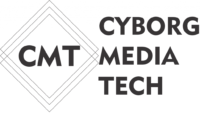
The technique of managing the visual elements of a project is known as graphic design.
Even though the phrase “graphic design” has only been in use since the 1920s, the art form itself has been a major factor in visual communication for thousands of years. Early examples of graphic design can be found in old documents and even prehistoric cave art.
History’s graphic design industry covers many other disciplines. It’s an exciting field that’s constantly changing, but its elasticity can make it hard for a beginner to know fully what graphic design is and what types of work designers do.
If you’re looking for a lecture on graphic design principles, you’ve come to the best location. Continue reading to study graphic design, read some examples, and learn about different design careers.
Graphic designers mean purpose
I’m sure many of you reading this, such as myself, think you have a great idea of what graphic design is. When I think about graphic design, I think of billboards, logos, publications, video games, graphic images, and raster graphics. But what exactly is it? Yes, it’s a profession, but for many others, it’s an art form – an expression of their aesthetic.
However, graphic design is not a black-and-white idea. To truly realize the concept of graphic design, you must first understand the elements and principles that create a design.
Good visual design simplifies communication. Take a spreadsheet with data science. A graphic designer may use different colors to represent which metrics are rising and which are falling, allowing the reader to easily grasp what is going well and what needs to change.
A well-executed graphic design can create strong emotions from the spectator but perhaps inspire them to act. For example, a website’s “sign up” page is often designed to encourage users to join an email list or start a free trial. Meanwhile, food brand strategy seeks to make the food enclosed inside feel more attractive to eat.

Graphic design elements
Elements of art are the fundamental units of any graphic art that form its structure and express its visual messages. Graphic design elements include:
- Line – The most major design element. Lines can be curly, straight, thick, thin, multiple, three-dimensional, or whatever you like! A line is just a design feature defined by a moving point in space.
- A shape is a double-defined area made up of lines. Shapes of different varieties include geometrical, abstract, and organic shapes, all of which are significant design aspects.
- Color – As there is science behind the feelings that color can create, color is one factor that is very significant in starting conversations. Color has three main properties: hue (the color family), value (how light or dark the color is), and saturate (the purity of the color).
- Typography is the art of ordering letters. This is critical since it has a significant impact on the design’s message. Different weights (bold, normal, or light) mixed with inconsistent sizing, color, and spacing can give power to the designer’s idea.
- Texture – In design, texture refers to how everything appears to feel when touched. Surface, for example, can be rough, clean, shiny, soft, complex, and so on. Another item used to increase brand awareness is texture. It can be used in connection with other elements like forms, color, images, and type.
- Size originally referred to how tiny or large that is. Size is used in design to show the importance and create visual interest in a design by mixing contrasting sizes.
- Space – The parts of the design that are left blank are known as space. Any distance or area between, around, below, or above other visual elements is part of these regions. Artists purposely create voids in their patterns to attract focus to particular aspects of the design.
Types of Graphic design
There are most common types of graphic design for example:
Design of a brand
Setting the rules and industry standards for a company to use among all brand items to create a constant brand identity is the art of brand design. Identity strategists help communicate a company’s attitude, tone, and key purpose, and so this work necessitates a lot of thinking.
Work for brand design includes, but is not reduced to:
- creating logos and determining specific standards for how they must be utilized producing stationery, symbols, and numerous drawings
- choosing brand colors and clearly defining rules for their use
- font design or choosing, and typography guidelines
- improving brand rules templates that can be used by brand management, growth, and other teams
- product design graphics and gift boxes
Brand image is evolving at a rapid rate. Because brands are constantly looking for new techniques to connect with their target audience as tech improves, their brand design needs to adopt new and dynamic channels.
Marketing layout
Graphic design for brand awareness is referred to as advertising design. Marketing designers may work on little projects, such as the layout of a marketing program, or on huge multi-faceted projects, such as planning the trade show stand, presentations, and newspaper ads.
Visual design for marketing campaigns can be done by marketing designers.
- Emails
- Newsletters
- Billboards and other forms of advertising
- Posters
- Print Advertisements
- Exhibition stands
- Website resources
Designing a website
Many graphic designers create graphic aids for usage on websites. However, it is essential to recognize that web design and graphic design are not the same things.
Because websites are active rather than basic products like a book or a magazine, designing a professional website necessitates a variety of skills. Many websites are designed by teams of multiple specialists with complementary skill sets since you need graphic design skills as well as experience with user experience (UX) and user interface (UI) design.
Web designers may work on a variety of projects, including:
- Making buttons and icons
- Picture, graphic, and other product arts
- Making web page layouts
- Making films and animated gifs
- Putting together several interactive design elements for a website
- Assisting with the development of visual elements for all devices (desktop, mobile, etc.)
- Work with web development, UX, UI, and marketing design teams to actually improve the site visitor experience.
Design of illustrations
Illustrations are commonly used in online, marketing, and brand design, but they are also used in other areas. Some designers concentrate only on illustration and will join large design teams, producing specific assets for different projects.
Illustrators can create graphic materials for a variety of purposes, including:
- books for children
- T-shirts and other items
- Websites for cards and stationary
- Marketing efforts using social media video and digital entertainment
Design of type
Some graphic designers specialize in the production or use of style, typefaces, or fonts.
Type design can consist of the following:
- Amount of input writing and numerals
- Typography components can be created by hand or digitally.
- Using styles and developing typographic rules for a brand
Infographic design
At their most basic, infographics are just images of data or information. Infographics can be 2D artwork, interactive website elements, or even movies. The connecting thread is that they enable the viewer to better understand a large amount of data or complex concepts.
An interactive infographic is presented in the image below. See how this design from the University of Washington makes it easier to understand the data of a research study on the effects of the lunar cycle on sleep habits.
Material and textile design
Textile graphic designers can produce designs for a variety of applications, including:
- fabrics\swallpaper
- textiles
- architecture
Packaging design
From food to technology to designer jewelry, the packing in which products are delivered is often as important as the items themselves. Product packaging designers attempt to showcase or complement the things included within the box.
Editorial layout
The editorial graphic design gave rise to the term “graphic design,” and it is still an important part of both print and digital news publications today. Publication professionals regarding:
- books
- journals
- papers
- mails, and electronic publications
Average graphic design jobs
With scientific advances introducing new types of graphic design, new graphic design professions have been created. This evolution has shifted the entire landscape of career opportunities in this field.
Demand for “classic” graphic designers who work primarily for printed media has declined sharply, but this isn’t the whole story. According to the Bureau of Labor Statistics, the work of graphic designers in computer system development services is expected to rise by 24% through 2028. (BLS). 1 Much of this demand is being driven by businesses’ and groups’ rising need for digital graphics and imagery as they try to increase their digital presence.
So, what are some of the most common graphic design job titles? Over the last year, we reviewed over 30,000 jobs posted needing a graphic design degree. 2 We were able to identify the most typical job titles using data:
- User experience (UX)designer
- Graphic designer
- Art director/web
- designer/creative director
As you can see, a number of graphic design career options are available once you have the necessary knowledge and experience. You may adapt your career to your unique interests and abilities.

